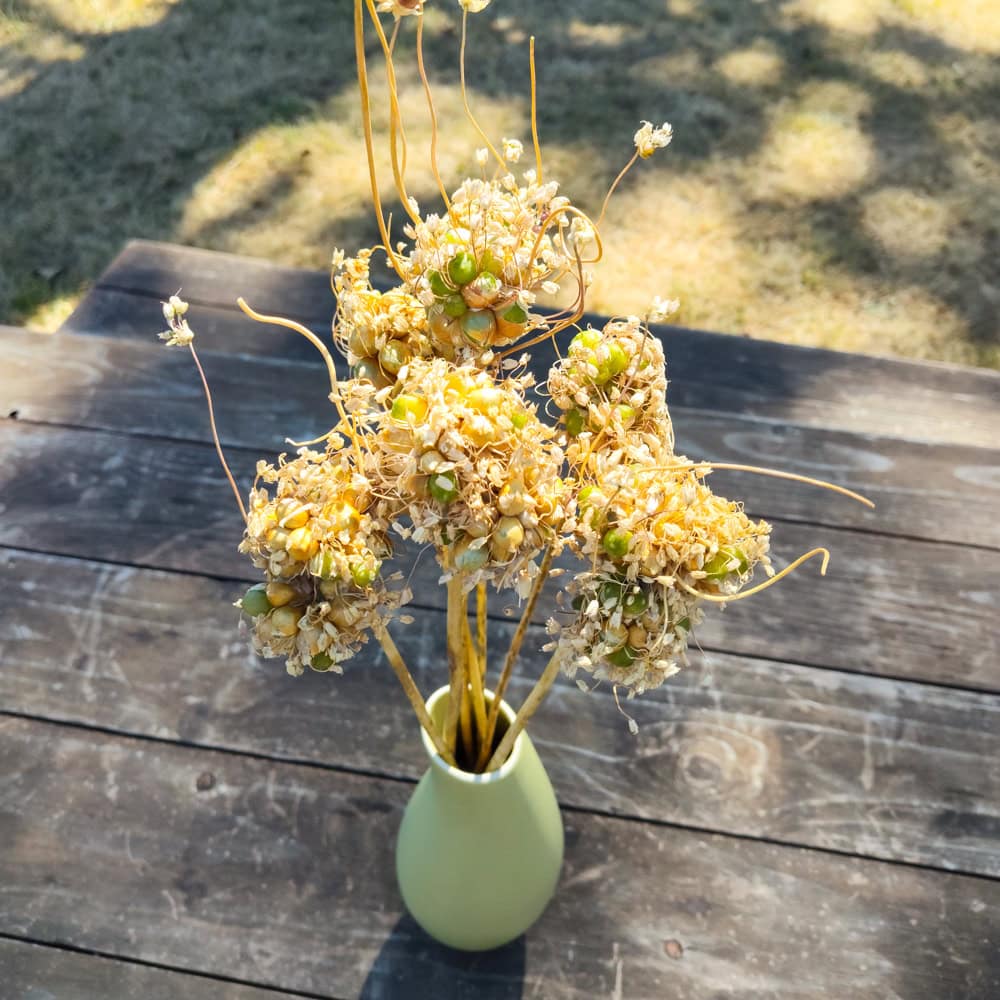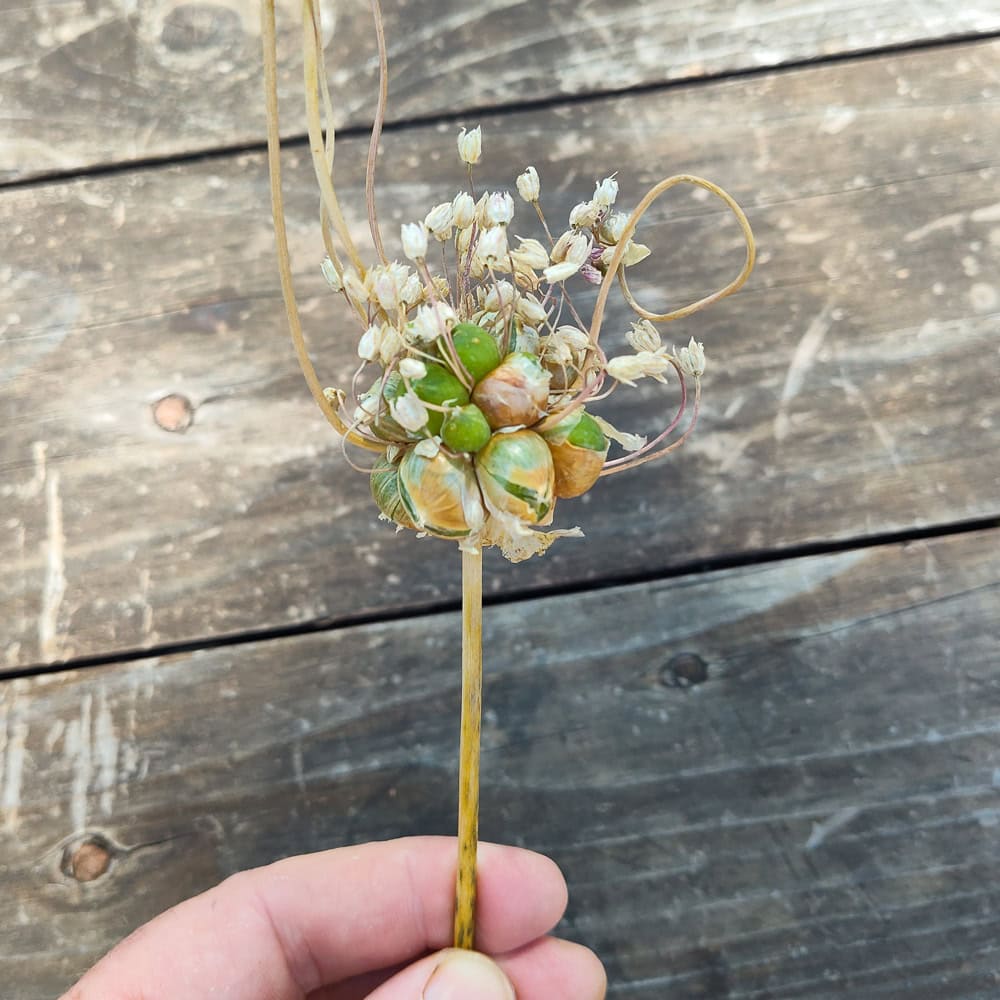Leek, Babington’s (Organic)
Allium ampeloprasum var. babingtonii
Babington’s Leek is a special perennial vegetable that is propagated from top-setting bulbils. Occasionally found growing wild in the British Isles where it may be native, but extremely rare in North America. A worthwhile plant to have growing in any garden but especially sought after for semi-wild perennial permaculture plantings and food forest edges. While it is possible to sow annually for vegetable harvest of small delicious leeks, Babington’s Leek really shines as a cut and come again perennial.
After the second year, the tops can be cut back at the soil level in the spring and the plants will grow back happily. If left to flower, the scapes can be harvested while tender for use like asparagus but with a garlic-leek flavor. After the flower heads make their fabulous bulbil-laden alien wands (seriously, they are so cool looking it’s worth planting just for the flower stalks), the plants die back to resprout in the fall as the cool rains arrive. The bulbils themselves are edible and it has been said that they make good pickles.
Plants have been hardy for us down to at least 5˚F, needing no protection, and are reportedly hardy to -4˚F (USDA Hardiness zone 6b). Plants also slowly multiply from underground bulblets. We found our first Babington’s Leek bulbils shared at a Eugene, Oregon seed swap, gifted by Mushroom and Linda Kapuler of Peace Seeds.
For more information on this botanical treat, check out this post at Backyard Larder. Here is a video from the Permaculture Association in the UK starring our friend Holly Silvester on how to propagate this crop.
*Orders containing both Babington’s Leek and garlic or shallots will ship with the garlic and/or shallots by late September.
No international orders.
Garlic will begin shipping the week of September 23, 2024. Please note that orders that contain seeds as well as garlic or shallots may be held until garlic ships.
Plant bulbils 1” deep from September through February. Space plants 6-8” apart in rows 1’ apart. Apply extra fertilizer February-March for bigger plants. Plants may take 2-3 years to flower and produce more bulbils. Part to full sun is best for the most abundant growth.
Seed Saving
Select largest healthiest bulbil clusters for seed. Bulbils left on the seed head can be stored in a cool dry place for up to 12 months.







What others are saying
There are no contributions yet.